Type I collagen deletion in αSMA+ myofibroblasts augments immune suppression and accelerates progression of pancreatic cancer
- PMID: 33667385
- PMCID: PMC8423173
- DOI: 10.1016/j.ccell.2021.02.007
Type I collagen deletion in αSMA+ myofibroblasts augments immune suppression and accelerates progression of pancreatic cancer
Abstract
Stromal desmoplastic reaction in pancreatic ductal adenocarcinoma (PDAC) involves significant accumulation of type I collagen (Col1). However, the precise molecular and mechanistic contribution of Col1 in PDAC progression remains unknown. Activated pancreatic stellate cells/αSMA+ myofibroblasts are major contributors of Col1 in the PDAC stroma. We use a dual-recombinase genetic mouse model of spontaneous PDAC to delete Col1 specifically in myofibroblasts. This results in significant reduction of total stromal Col1 content and accelerates the emergence of PanINs and PDAC, decreasing overall survival. Col1 deletion leads to Cxcl5 upregulation in cancer cells via SOX9. Increase in Cxcl5 is associated with recruitment of myeloid-derived suppressor cells and suppression of CD8+ T cells, which can be attenuated with combined targeting of CXCR2 and CCR2 to restrain accelerated PDAC progression in the setting of stromal Col1 deletion. Our results unravel the fundamental role of myofibroblast-derived Co1l in regulating tumor immunity and restraining PDAC progression.
Keywords: B cells; T cells; extracellular matrix; fibroblasts; genetically engineered mouse models; myeloid-derived suppressor cells (MDSCs); pancreatic ductal adenocarcinoma (PDAC); tumor immunology; tumor microenvironment; type I collagen.
Copyright © 2021 Elsevier Inc. All rights reserved.
Conflict of interest statement
Declaration of interests The authors declare no conflict of interest.
Figures

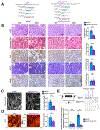
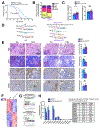
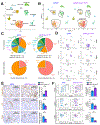
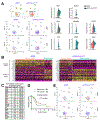
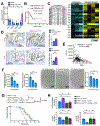
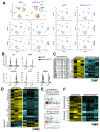
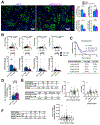
Comment in
-
Pancreatic cancer is suppressed by fibroblast-derived collagen I.Cancer Cell. 2021 Apr 12;39(4):451-453. doi: 10.1016/j.ccell.2021.02.017. Epub 2021 Mar 11. Cancer Cell. 2021. PMID: 33711271
Similar articles
-
Activated pancreatic stellate cells sequester CD8+ T cells to reduce their infiltration of the juxtatumoral compartment of pancreatic ductal adenocarcinoma.Gastroenterology. 2013 Nov;145(5):1121-32. doi: 10.1053/j.gastro.2013.07.025. Epub 2013 Jul 25. Gastroenterology. 2013. PMID: 23891972 Free PMC article.
-
Pancreatic Stellate Cells Promote Tumor Progression by Promoting an Immunosuppressive Microenvironment in Murine Models of Pancreatic Cancer.Pancreas. 2020 Jan;49(1):120-127. doi: 10.1097/MPA.0000000000001464. Pancreas. 2020. PMID: 31856087
-
Modulating the CXCR2 Signaling Axis Using Engineered Chemokine Fusion Proteins to Disrupt Myeloid Cell Infiltration in Pancreatic Cancer.Biomolecules. 2025 Apr 30;15(5):645. doi: 10.3390/biom15050645. Biomolecules. 2025. PMID: 40427538 Free PMC article.
-
Pancreatic stellate cells and the interleukin family: Linking fibrosis and immunity to pancreatic ductal adenocarcinoma (Review).Mol Med Rep. 2024 Sep;30(3):159. doi: 10.3892/mmr.2024.13283. Epub 2024 Jul 12. Mol Med Rep. 2024. PMID: 38994764 Free PMC article. Review.
-
The critical roles of activated stellate cells-mediated paracrine signaling, metabolism and onco-immunology in pancreatic ductal adenocarcinoma.Mol Cancer. 2018 Feb 19;17(1):62. doi: 10.1186/s12943-018-0815-z. Mol Cancer. 2018. PMID: 29458370 Free PMC article. Review.
Cited by
-
Compressive stresses in cancer: characterization and implications for tumour progression and treatment.Nat Rev Cancer. 2024 Nov;24(11):768-791. doi: 10.1038/s41568-024-00745-z. Epub 2024 Oct 10. Nat Rev Cancer. 2024. PMID: 39390249 Review.
-
A transcriptomic analysis of dental pulp stem cell senescence in vitro.Biomed Eng Online. 2024 Oct 18;23(1):102. doi: 10.1186/s12938-024-01298-w. Biomed Eng Online. 2024. PMID: 39425139 Free PMC article.
-
Stromal nicotinamide N-methyltransferase orchestrates the crosstalk between fibroblasts and tumour cells in oral squamous cell carcinoma: evidence from patient-derived assembled organoids.Oncogene. 2023 Apr;42(15):1166-1180. doi: 10.1038/s41388-023-02642-5. Epub 2023 Feb 23. Oncogene. 2023. PMID: 36823377
-
New functions of DDR1 collagen receptor in tumor dormancy, immune exclusion and therapeutic resistance.Front Oncol. 2022 Jul 22;12:956926. doi: 10.3389/fonc.2022.956926. eCollection 2022. Front Oncol. 2022. PMID: 35936735 Free PMC article. Review.
-
Roles of differently polarized macrophages in the initiation and progressionof pancreatic cancer.Front Immunol. 2023 Aug 11;14:1237711. doi: 10.3389/fimmu.2023.1237711. eCollection 2023. Front Immunol. 2023. PMID: 37638028 Free PMC article. Review.
References
Publication types
MeSH terms
Substances
Grants and funding
LinkOut - more resources
Full Text Sources
Other Literature Sources
Medical
Molecular Biology Databases
Research Materials

